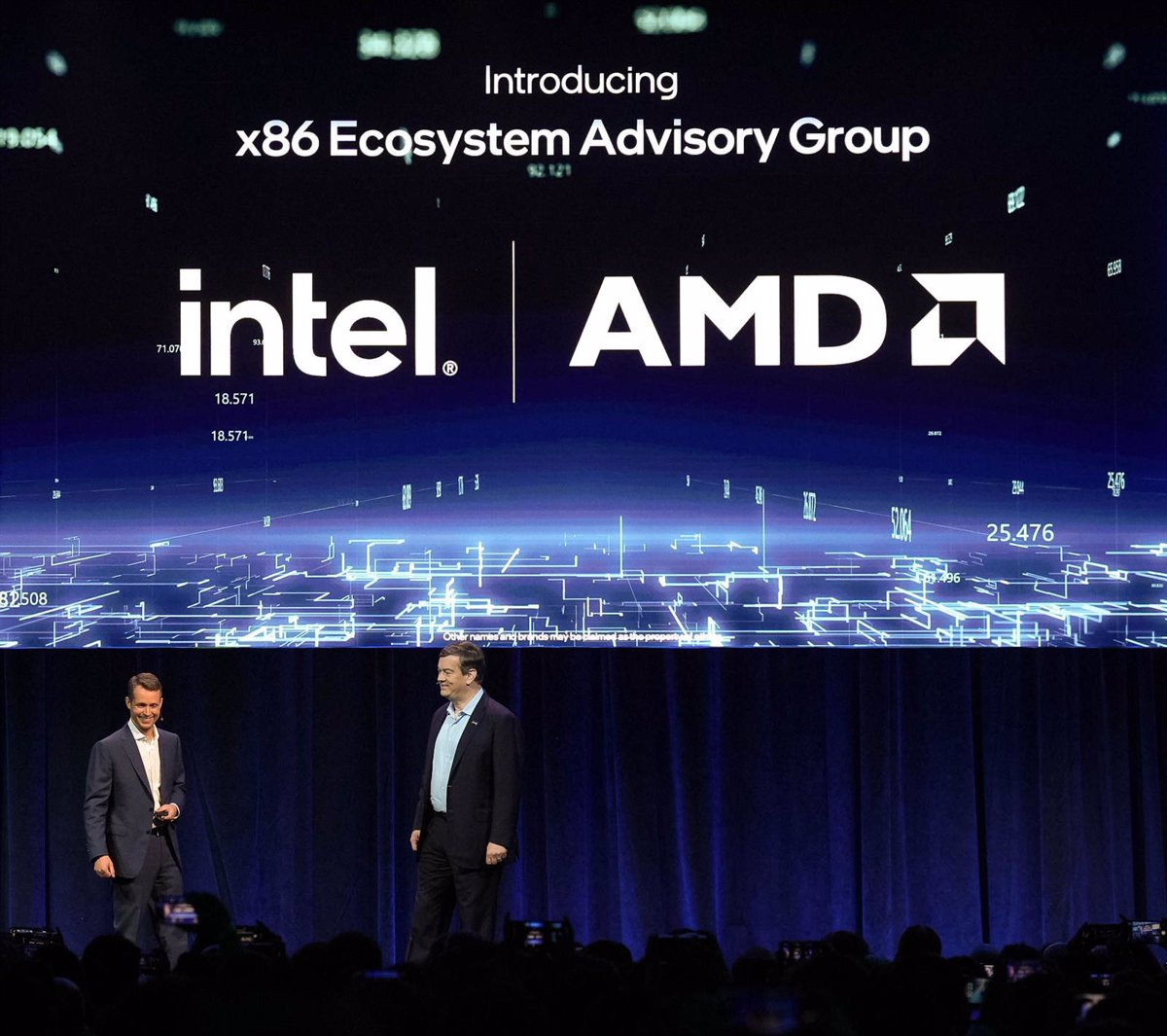Intel y AMD have joined forces to create a x86 Ecosystem Advisory Group with which they will bring together technological leaders in the sector, belonging to companies such as Google, Dell, Lenovo, Meta and Microsoft, among others, to accelerate the adoption of this technology and its innovation, facilitating the compatibility between platforms and simplifying software development.
The x86 architecture is “the foundation of modern computing,” as defined by Intel. This is because, forty years after its release, It is the architecture chosen by many data centers and PCs globally.
However, given the appearance of new dynamic Artificial Intelligence (AI) workloadscustom and new chiplets Advances in 3D packaging and systems architectureboth Intel and AMD have shared their intention to “strengthen and expand” the x86 ecosystem in order to adapt it to the needs of the future.
To this end, both companies have joined forces to form the x86 Ecosystem Advisory Group, with which they intend accelerate the adoption of this technology and drive its innovationthus initiating “one of the most significant changes to the x86 architecture in decades.”
Specifically, this advisory group brings together founding companies such as Broadcom, Dell, Google, Hewlett Packard EnterpriseHP Inc., Lenovo, Meta, MicrosoftOracle and Red Hat. In addition, it will also have the participation of the Linux creator Linus Torvalds and Epic Games CEO Tim Sweeney.
Thus, as Intel has detailed in a statement, this new group will focus on identifying new ways to expand the x86 ecosystem By enabling cross-platform compatibility, simplifying software development.
Likewise, it will also offer developers a platform with which to identify architectural needs and characteristics and, based on this, create “innovative and scalable solutions for the future.” All of this will be carried out through a “more unified” set of architectural instructions and interfaces.
To do this, as Intel has explained, the group will request technical contributions from the x86 hardware and software communities. As a result, it will be easier to create “consistent and compatible” architectural features and programming models“, designed for all sectors, from data centers, to the cloud, the client and embedded devices.
Under these premises, technology companies hope to achieve a series of objectives, such as standardize interfaces of products from both Intel and AMD. Likewise, they have also pointed out that will increase choice and compatibility of hardware and software for customersin addition to allowing a more effective integration of new functions into operating systems, frameworks and applications.
Although both companies define themselves as “vigorous competitors”, Intel and AMD also share a history of industrial collaboration focused on advances at the platform level, the introduction of standards and the mitigation of security vulnerabilities within the x86 ecosystem, as they have highlighted.
Therefore, with this advisory group they intend to take this collaboration “to the next level”, in order to benefit the entire computing ecosystem. As stated in this regard by the Intel CEO Pat Gelsinger This is “one of the most significant changes” to the x86 ecosystem, which will bring new levels of customization, compatibility and scalability, that are “necessary for meet the current and future needs of customers.
“The creation of the x86 Ecosystem Advisory Group will ensure that the x86 architecture continues to evolve as the preferred computing platform for developers and customers alike“said AMD president and CEO Lisa Su.
The announcement of this x86 Ecosystem Advisory Group comes at a time when the Adoption of ARM architecture is growing, as is the case of Apple with its Apple Silicon processors, and more recently Qualcomm, with its Snapdragon X Elite PC chips, which power the new Copilot+ computers capable of operating with AI directly from the hardware.
